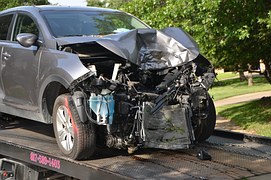Top 5 Maryland Personal Injury Questions: Should I Go To The Doctor, or, I Haven’t Gone To The Doctor Yet.
While it’s difficult to answer these inquiries with across-the-board precision, this subject arises frequently during initial case analysis and strategy sessions. The short answer to both questions posed in the title is a resounding “yes”.
Anytime anyone who has been involved in a car accident asks me if they should go to the doctor, my unflinching, unhesitating, unwavering answer is “of course you should”.
Get yourself checked out. If everything is okay- you have peace of mind. If something is wrong- you sought medical care, have a diagnosis, and on you are on your way to recovery. It just makes sense. As Attorney Eric T. Kirk will tell you.

The more difficult question comes from the individual who, some five, six, seven days after the accident, has not sought medical care and is inquiring whether or not they should go to the doctor. While this question may seem innocuous on its face, it’s problematic. Highly problematic. It’s concerning because it arises in the context of someone seeking legal advice for a personal injury case. It should go without saying that you have to sustain personal injury to have a personal injury case. Although there is no hard-and-fast rule, some general observations are appropriate.
On the one hand, if an individual was involved in an accident and has not sought medical treatment for a period of one week or more, one could certainly reasonably conclude that that individual is not injured. If they were, they would have seen a doctor. Certainly the insurance company is going to make that argument and take that position.
On the other hand, the nature of injuries to the muscles, ligaments, and tendons in the neck and back is such that symptoms of trauma to those body parts often do not manifest for a period of a few days.
Moreover, many people have a reluctance to visit health care providers. Whether that’s a steely stoicism, a bad experience in childhood, or due to some other factor, my experience is that many people, perhaps most people, will try home remedy and “mother nature and father time” prior to seeking medical intervention. In that instance, a person may well have sustained an injury, and have a viable claim, despite delayed medical care and attendance.
Beginning in March of 2020, I’ve seen another cogent, and I would suggest viable, reason for a hesitance to go to a doctor’s office generally, or perhaps an E/R specifically. The advent of the novel coronavirus pandemic, and the associated COVID19 disease it causes have forced individuals, event those seriously injured, to question whether or not they should go to a doctor. In the wake of the pandemic, telehealth and telemedicine programs have been implemented and may alleviate some of these concerns.
While there are exceptions to every rule, and these are fact dependent situations, if you find yourself a week or ten days after an accident, wondering if you have a personal injury case and asking if you should go to a physician, the answer very probably is “No”- you don’t have a personal injury case because there was no personal injury, or at least not one significant enough for you to seek medical care in the first instance. An insurance company is most certainly going to tell you this.



